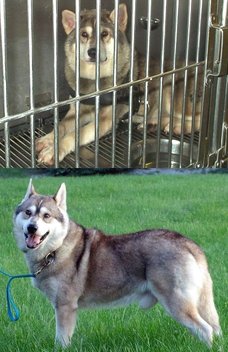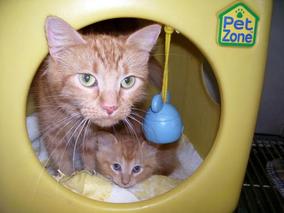Genesee Residents for Animal Control Evolution
|
What does a No Kill mean? Perhaps it's better to start out with what it DOESN'T mean.
No Kill certainly does not mean stacking dogs or cats in cages for lengthy periods of time until they are adopted. It does not mean allowing animals in untreatable pain or suffering to be kept alive nor does it allow for truly aggressive dogs to be adopted. Simply put, No Kill means that no animal who is determined to be treatable for either physical or temperament issues will be killed. Of course, if nothing else changed and all treatable animals were kept at Shelters until adopted, there would certainly be an overcrowding issue. However, when Shelters adopt and follow the No Kill Equation program (outlined to the right), animals do not stay long; they are adopted, rescued, fostered, returned to owners. |
|
Why Use the Word "Kill" Instead of "Euthanasia"?
It's not the intent of GRACE to offend or cause stress by using the word "kill". We feel that what is occurring in many Animal Shelters throughout the world does not fit the any of the definitions of "euthanisia" that we could find.
Animal euthanasia (from the Greek meaning "good death") is the act of putting to death painlessly or allowing to die, as by withholding extreme medical measures, an animal suffering from an incurable, painful disease or condition. Euthanasia methods are designed to cause minimal pain and distress.
Pet Euthanasia: The act or practice of painlessly ending the life of an animal who has a terminal illness or incurable condition, as by giving a lethal drug.
Humane Euthanasia (Greek, "good death") is the practice of killing an animal, in a painless or minimally painful way, for merciful reasons, usually to end suffering.
GRACE does not support killing as one of the first defenses against overcrowding at any Shelter and does not consider such an act to be euthanasia.
Animal euthanasia (from the Greek meaning "good death") is the act of putting to death painlessly or allowing to die, as by withholding extreme medical measures, an animal suffering from an incurable, painful disease or condition. Euthanasia methods are designed to cause minimal pain and distress.
Pet Euthanasia: The act or practice of painlessly ending the life of an animal who has a terminal illness or incurable condition, as by giving a lethal drug.
Humane Euthanasia (Greek, "good death") is the practice of killing an animal, in a painless or minimally painful way, for merciful reasons, usually to end suffering.
GRACE does not support killing as one of the first defenses against overcrowding at any Shelter and does not consider such an act to be euthanasia.


